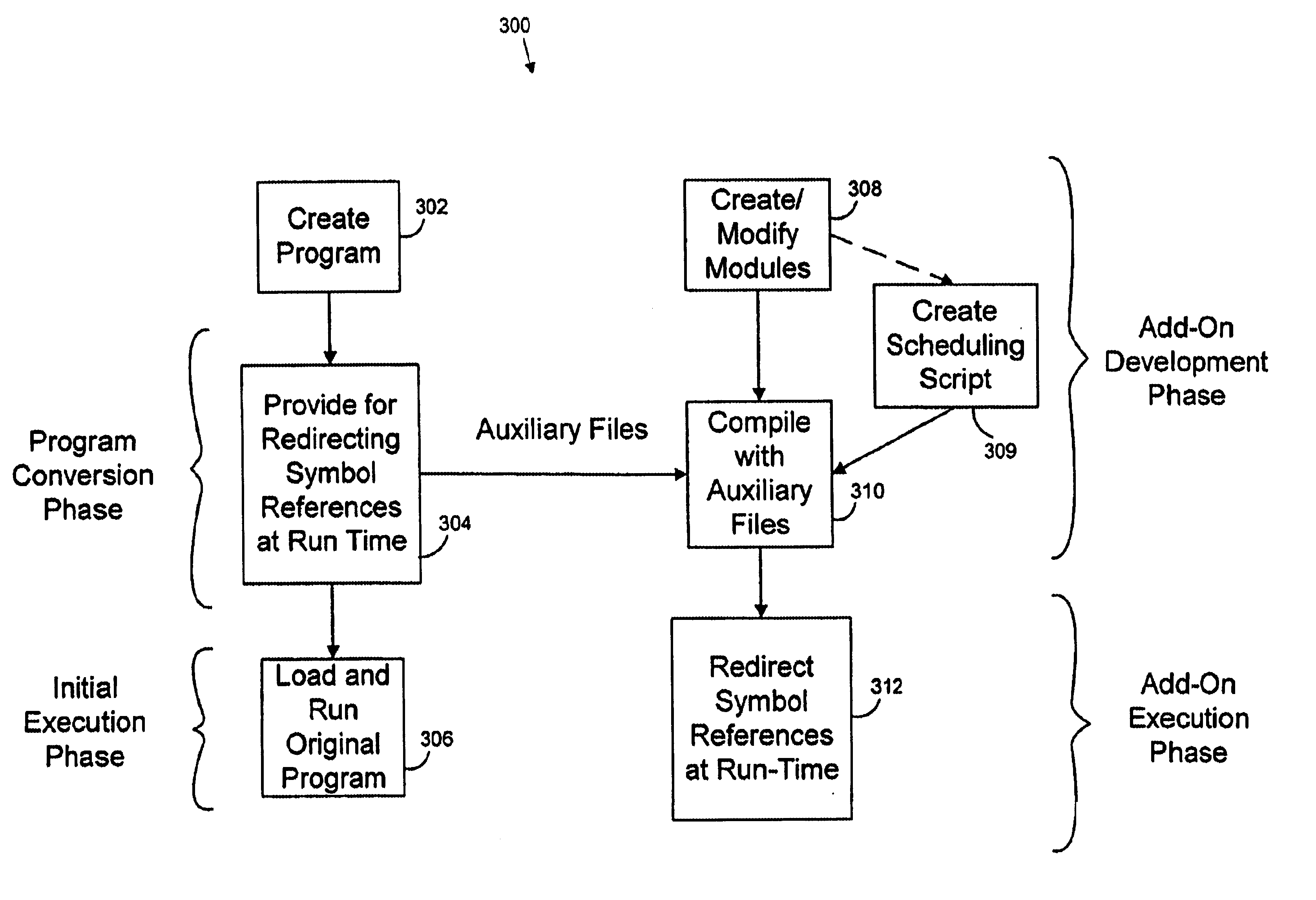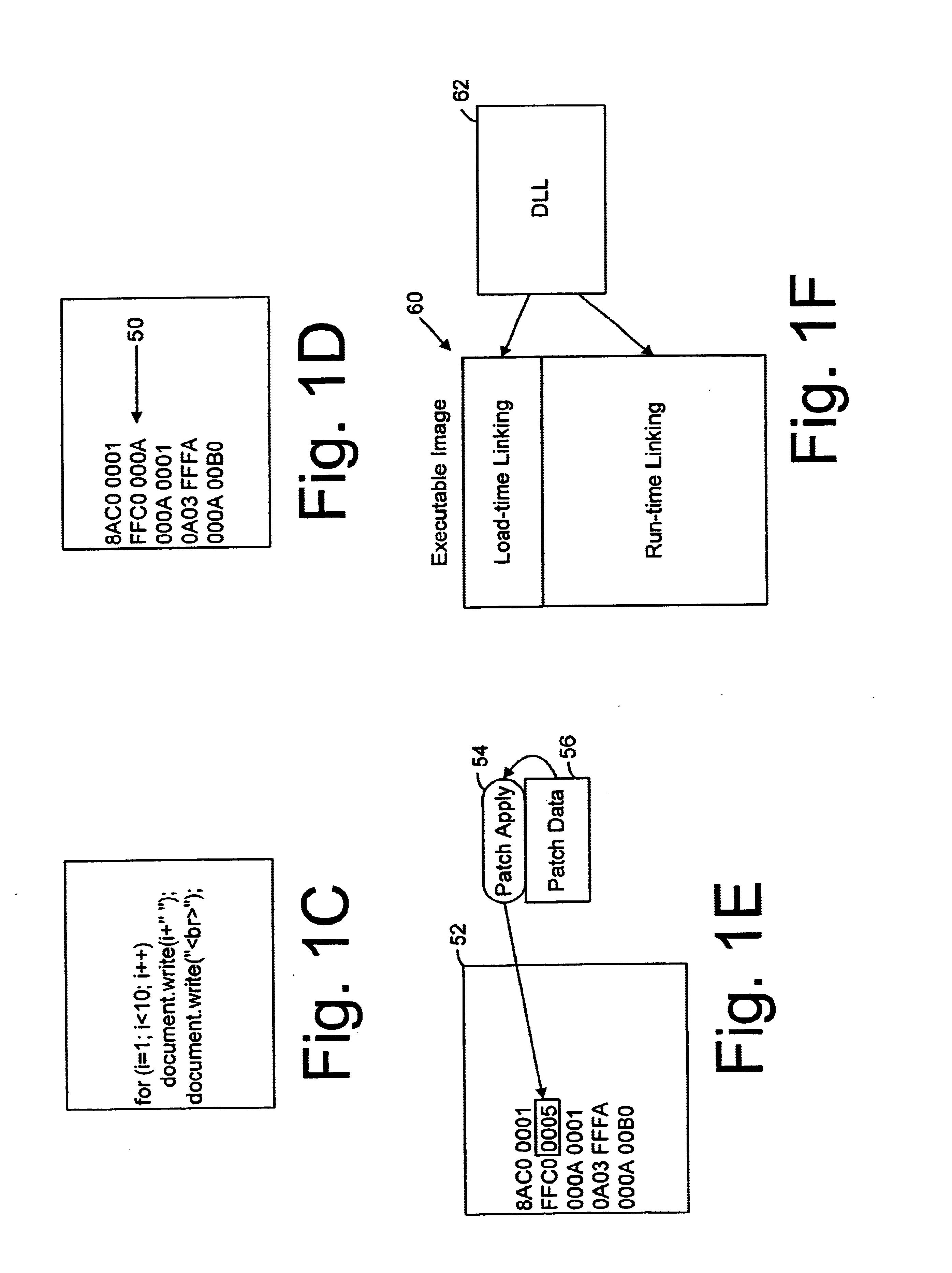System for modifying the functionality of compiled computer code at run-time
a computer code and run-time technology, applied in the field of computer program execution, can solve the problems of notoriety slow compared to compiled code, the build process for these projects is complicated in itself, and the program produced with the compiled program approach is more complex to develop and modify, so as to achieve the effect of easy chang
- Summary
- Abstract
- Description
- Claims
- Application Information
AI Technical Summary
Benefits of technology
Problems solved by technology
Method used
Image
Examples
Embodiment Construction
[0068]The present invention is discussed in sections as follows: The first section describes basic hardware, such as a computer, subsystems and network, suitable for use with the present invention. The second section provides an overview of the invention. The third section illustrates a specific set of tools, utility routines and other programs for preparing an initial program for run-time modification ability. A fourth section describes the process of creating add-on modules which provide modified functionality at run-time. A fifth section describes methods, including the use of a script language, to alter references to items at startup or run-time. A sixth section discusses miscellaneous details and features of the invention.
1. Description of Hardware
[0069]FIGS. 2A-C illustrate basic hardware components suitable for practicing the present invention.
[0070]FIG. 2A is an illustration of computer system 200 including display 202 having display screen 204. Cabinet 206 houses standard c...
PUM
 Login to View More
Login to View More Abstract
Description
Claims
Application Information
 Login to View More
Login to View More - R&D
- Intellectual Property
- Life Sciences
- Materials
- Tech Scout
- Unparalleled Data Quality
- Higher Quality Content
- 60% Fewer Hallucinations
Browse by: Latest US Patents, China's latest patents, Technical Efficacy Thesaurus, Application Domain, Technology Topic, Popular Technical Reports.
© 2025 PatSnap. All rights reserved.Legal|Privacy policy|Modern Slavery Act Transparency Statement|Sitemap|About US| Contact US: help@patsnap.com



